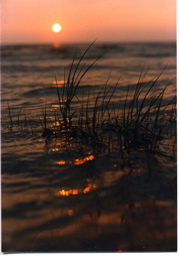 It was the worst oil spill ever. And it happened in the Persian Gulf, fewer than 20 years ago. What clues does the 1991 Gulf War oil spill hold for the recovery from the continuing blowout of BP’s Gulf well?
It was the worst oil spill ever. And it happened in the Persian Gulf, fewer than 20 years ago. What clues does the 1991 Gulf War oil spill hold for the recovery from the continuing blowout of BP’s Gulf well?
On January 22, Iraqi soldiers occupying Kuwait began opening valves at the Sea Island oil terminal. Up to 11 million barrels of oil poured into the Gulf, compared with between 2.8-4.8 million barrels from BP’s well.
Clean-up operations were impossible at first due to continuing fighting and the risk of mines. But eventually 1.5 million barrels of it were skimmed up by Saudi ships and winds drove the rest southwards until it beached along the Kuwaiti and Saudi coast.
The initial impact was devastating with calm salt marshes suffering the most, but recovery was in places encouraging. In the warm Gulf waters bathed in harsh sunlight, the oil broke down quickly.
Within three years, many bird and fish populations had recovered entirely. In fact, catches in some places were higher after the spill than before it, as the halt to fishing allowed stocks to recover.
Overall, the experience is moderately encouraging for recovery of the Gulf of Mexico. Life is surprisingly resilient.
(READ the full article in the Arab-Emirate National)
Robin Mills is an energy economist based in Dubai and author of The Myth of the Oil Crisis. He believes that the environmental impact of fossil fuels is the most serious problem the world faces today, but a portfolio of solutions can solve it.




















There definitely is hope and encouragement in this story, thank’s for posting, Geri~